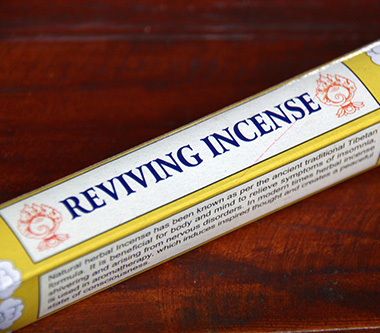Herbal Incense
How the incense is made
Incense has permeated almost every part of life in different cultures around the world. In past times, it was used at births and deaths to deter demons and appease gods. It has played an important role in worships for several different religions throughout the ages as well as been used as a form of purification for others. The delicate aroma produced by burning incense was as popular in the 5th century as it is now. This particular scent is based off ancient Tibetan formulas and thought to have medicinal properties. Traditionally, Tibetan incense has a characteristic “earthy” smell and uses centuries-old recipes taken from Ayurvedic medical texts.
Just as there are different cultural forms of incense, there are different physical forms also. These sticks are solid, meaning they have no core and are made entirely of the incense material, allowing you to easily break off the amount you wish to burn. It is made using materials that have been locally available in Nepal for centuries. The plants and herbs are finely ground, mixed with a combustible base that allows it to sustain an ember and burn on its own, and then moulded into shape. It’s important to make sure that the base and herbs are carefully balanced to ensure even burning and aroma.






